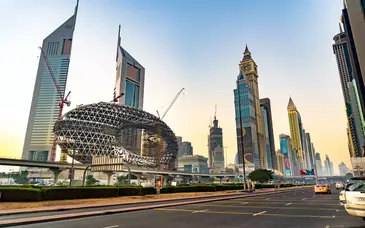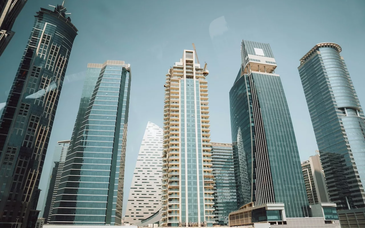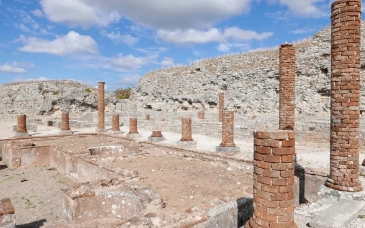Porto’s Real Estate Market at a Crossroads
Porto is emerging as a key destination for institutional and private capital seeking long-term returns in Southern Europe. Strategic infrastructure investments, a growing population, and the city’s positioning as a technology and services hub have accelerated demand for high-quality real estate assets. While residential investments previously dominated the market, shifting economic and regulatory conditions have redirected investor interest toward commercial property for sale in Porto — a segment that offers more stable yields, longer lease structures, and stronger tenant profiles. For those evaluating investment in commercial real estate in Portugal, Porto stands out as a highly competitive and sustainable option.
This shift reflects a broader trend among investors who prioritize asset classes with predictable income, lower regulatory exposure, and resilience to tourism cycles. Porto’s commercial market — particularly in sectors such as office, retail, and mixed-use developments — has demonstrated strong fundamentals supported by consistent demand and controlled supply. As capital continues to flow into Portugal’s northern economic engine, understanding the commercial landscape is critical for making informed, strategic investment decisions.
The Pressure on Residential Property Investors

Residential real estate in Portugal, once considered the most accessible entry point for investors, is now facing growing structural challenges. In Porto, rising development costs, tightening regulatory oversight, and oversaturation in the short-term rental segment are significantly impacting investor returns. The introduction of new housing laws, caps on rent increases, and licensing restrictions in high-demand areas have constrained yield potential and increased compliance burdens. As a result, many investors are reassessing the risk-return profile of residential assets, particularly in urban centers where price appreciation is slowing.
Several key factors are contributing to the reduced attractiveness of residential investments:
- Construction and renovation costs have surged, with INE reporting a 7.1% annual increase in 2024, placing pressure on acquisition and development budgets.
- Rental yield compression is occurring as competition increases and regulatory limits reduce flexibility in pricing.
- Short-term rental restrictions in central Porto have reduced the viability of tourist-focused investments.
- Capital growth stagnation is evident in mature neighborhoods, where residential prices have plateaued or underperformed commercial sectors.
These pressures have led more investors to explore alternative strategies, including shifting capital toward commercial assets with stronger fundamentals and lower operational risk.
Comparing Returns: Commercial vs. Residential Assets
Below is a comparison of current average returns and key performance indicators in Porto:
Metric |
Residential Property |
Commercial Property (Retail/Office) |
Average Gross Yield |
3.5% – 4.5% |
5.5% – 7.5% |
Lease Length |
6 – 12 months |
3 – 10 years |
Vacancy Risk |
High (short lets) |
Moderate to Low |
Sensitivity to Regulation |
High |
Low |
Maintenance & Turnover Costs |
High |
Lower |
Exposure to the Tourism Market |
High |
Minimal |
Key takeaway: Commercial real estate in Porto outperforms residential assets in yield, stability, and regulatory predictability.
Commercial Real Estate: Lower Risk, Higher Stability

In contrast to the increasing volatility in residential markets, commercial real estate in Porto offers investors a more stable and risk-managed investment profile. With longer lease agreements, stronger tenant commitments, and a lower dependency on seasonal demand, commercial assets provide consistent income streams and reduced operational uncertainty. This makes them especially attractive to investors seeking capital preservation and predictable returns in a shifting regulatory environment.
Key advantages of commercial real estate include:
- Long-term lease structures range from 3 to 10 years, reducing vacancy turnover and securing income stability.
- High tenant retention in strategic locations such as Boavista and central business zones, supported by demand from legal, tech, and service-sector firms.
- Lower exposure to tourism-related volatility has disrupted many residential rental models.
- Professional-grade tenants are often responsible for part of the maintenance and operational costs, improving net yield outcomes.
As a result, investors aiming to invest in commercial property in Porto benefit from a more resilient asset class with lower downside risk.
Opportunities in Retail and Office Space

Porto’s commercial market is undergoing a structural shift as demand for modern, flexible spaces increases across both the retail and office segments. Investors looking at commercial property for sale in Porto will find compelling opportunities driven by long-term demographic and economic trends. With Porto positioning itself as a center for innovation, services, and urban renewal, commercial zones are experiencing rising tenant interest and upward pressure on rents.
Several trends are shaping investor opportunities in this segment:
- Flexible office demand is growing, particularly from tech companies, startups, and remote-first firms seeking scalable, high-spec workspace in central areas.
- Neighborhood retail hubs are thriving, supported by population growth and lifestyle shifts favoring local commerce over large shopping centers.
- Urban regeneration projects in districts such as Campanhã, Boavista, and Bonfim are enhancing infrastructure and unlocking new development potential.
- Enterprise tenants and multinationals are expanding operations in Porto, increasing demand for professionally managed office space in Porto.
These dynamics are contributing to stronger yields, lower vacancy rates, and long-term value growth in both office and retail space for sale in Porto, making the segment attractive for strategic investors.
What to Know Before Investing in Commercial Property
Before you invest in commercial property in Porto, it's essential to evaluate:
- Location quality: Proximity to transit, foot traffic, and business clusters.
- Lease terms: Longer leases with creditworthy tenants mitigate risk.
- Property type: Office, retail, logistics, or mixed-use, each has different profiles and cycles.
Roca Estate supports investors through every stage:
- In-depth market analysis and sourcing of off-market opportunities
- Due diligence, legal structuring, and tax advisory
- Ongoing property management and tenant relations
Conclusion: Porto’s Commercial Sector as a Long-Term Investment Strategy

In today’s market environment, the case for investing in commercial property for sale in Porto is stronger than ever. With higher yields, longer lease durations, and reduced exposure to regulatory and tourism-related risks, commercial real estate offers a more resilient and performance-driven alternative to residential assets. Porto’s evolving urban landscape, growing business base, and stable demand further support long-term capital appreciation.
For investors evaluating Portugal property investment strategies, commercial assets in Porto present a compelling balance of income generation and capital security. Roca Estate provides tailored guidance across every phase — from asset sourcing and due diligence to long-term management — ensuring your investment is structured for sustained success.
To explore tailor-made commercial property opportunities in Porto and receive expert investment guidance, contact Roca Estate today.






